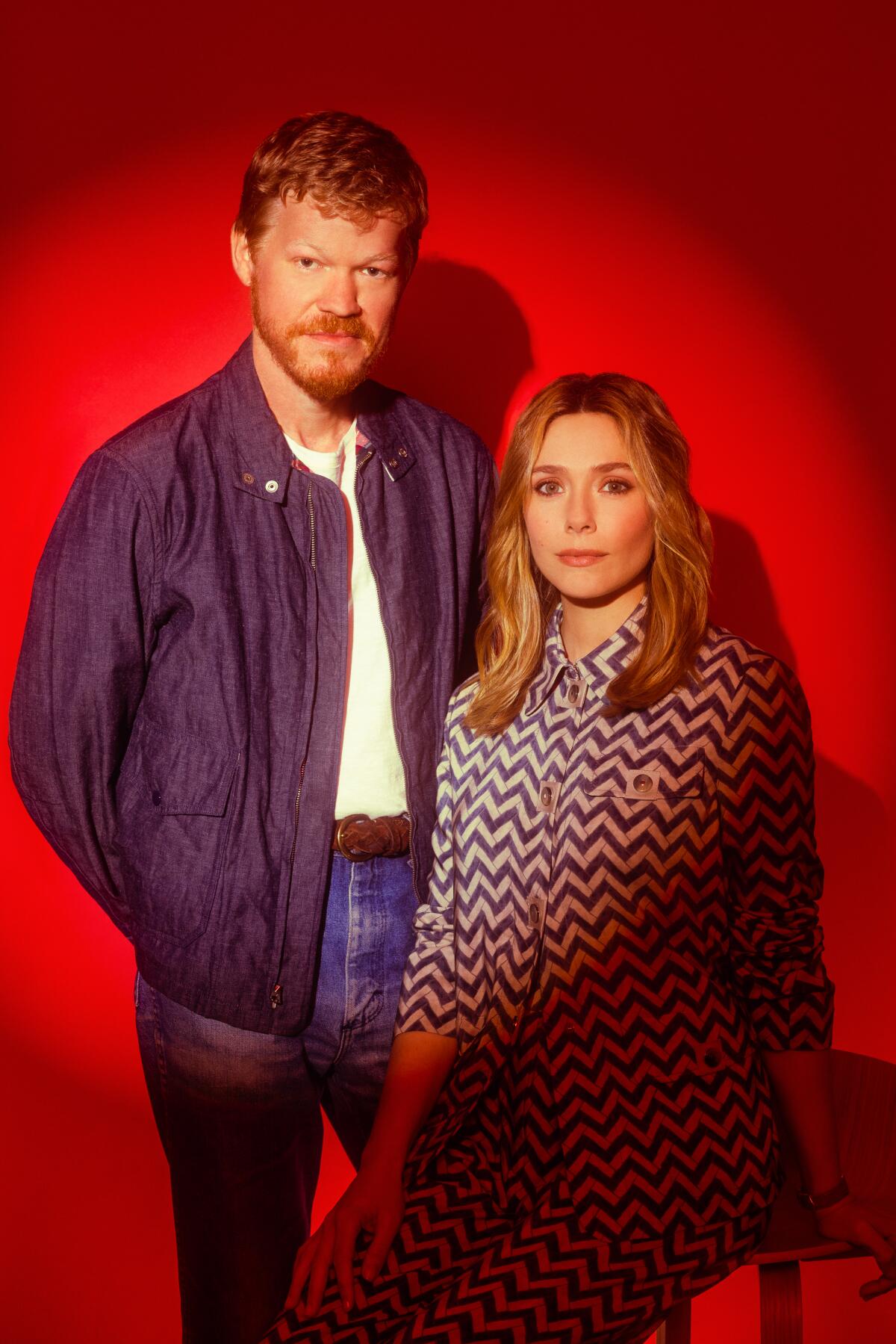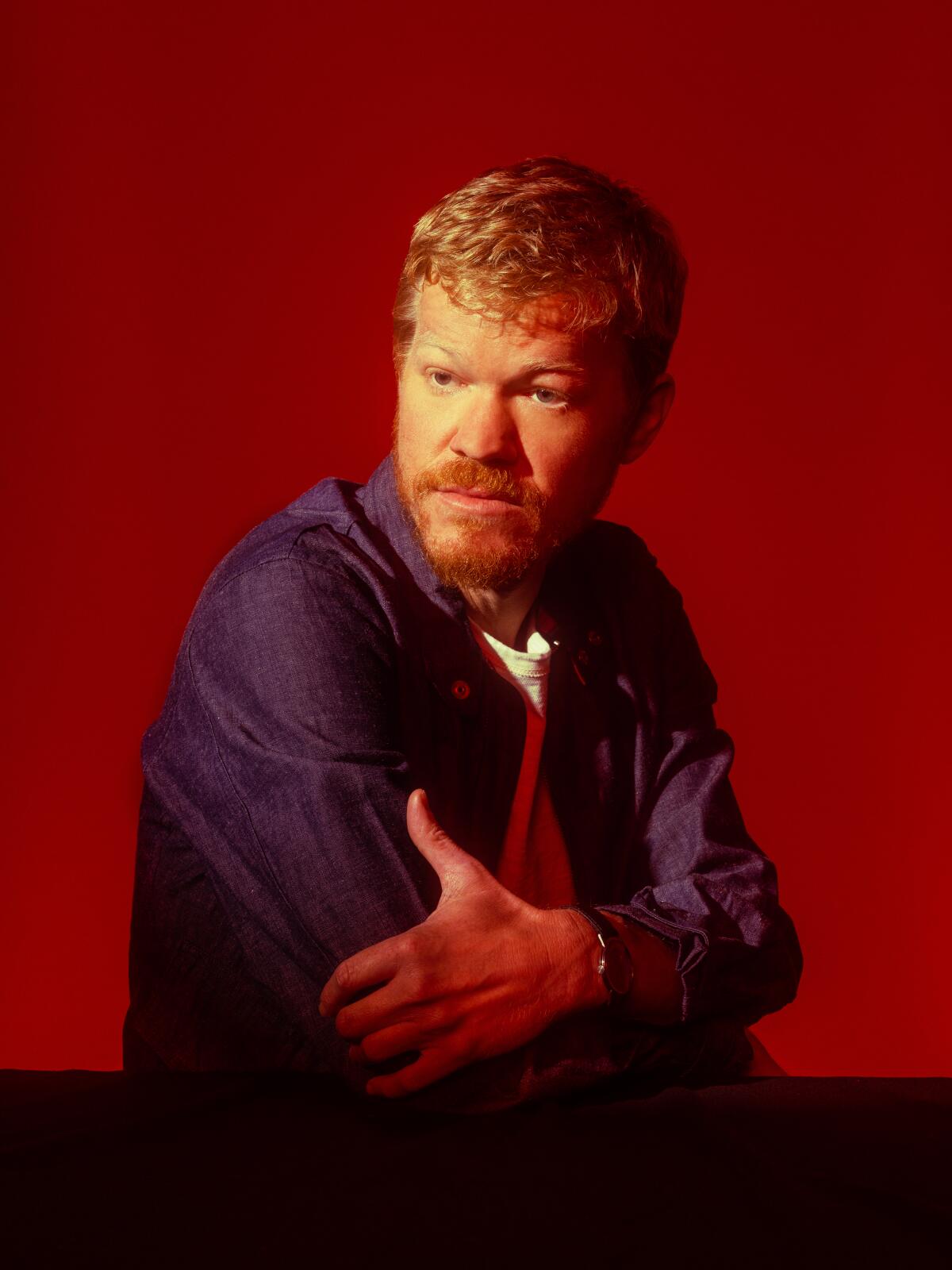Sign up for The Envelope
Get exclusive awards season news, in-depth interviews and columnist Glenn Whipp’s must-read analysis straight to your inbox.
You may occasionally receive promotional content from the Los Angeles Times.

In 1980, Texas housewife Candy Montgomery was accused of murdering her friend Betty Gore with an ax — an astounding 41 cuts were found on Gore’s body. The crime and surrounding events, including a public trial that saw Montgomery being found not guilty after pleading self-defense — saying Gore had attacked her after learning of her husband’s affair with her friend — is the sort of stranger-than-fiction tale Hollywood loves. In fact, just a year after these events played out in Hulu’s “Candy,” Max presented the story in “Love & Death.”
That limited series, written by David E. Kelley and based largely on the 1984 book “Evidence of Love: A True Story of Passion and Death in the Suburbs,” examines the before-and-after, including the love affair between Montgomery and Gore’s husband, Allan. With the characters Candy and Allan requiring much nuance, Kelley and executive producer and director Lesli Linka Glatter, who helmed five of the seven “Love & Death” episodes, knew immediately whom to cast.
“The first choice was Elizabeth Olsen,” Glatter says in an April video call. “She goes deep, and her eyes let you into her psyche. She had a huge amount of empathy for Candy and got inside her skin. Jesse Plemons was also our first choice for Allan. Jesse is an extraordinary actor, and subtle and complicated, so I felt like we hit pay dirt.”
Olsen and Plemons both say they, in turn, were attracted to the project based on the scripts and the involvement of the writer and director. For Olsen in particular, Candy represented the type of character she’d not had the opportunity to play in a world she hadn’t previously experienced. To prepare, the actors had the book, a series of articles from Texas Monthly and court transcripts, as well as some photographs, but ultimately this wasn’t about mimicking real people.
Our BuzzMeter panel of veteran TV journalists predicts the winners in 14 categories of the 2023(?) Emmys. You can, too, in our weekly polls.
“In the early phases, you’re just exploring the character in the story,” Plemons says. “You’re trying to gather as much information as possible, because you never know if something, even tiny little snippets out of a book, could unlock something in your mind. Then there’s a certain amount of trusting that you’ve unlocked who they are at their core, reminding yourself that you’re not making a documentary about these people, you want to be truthful and honest and respectful to who you believe they were.”
An important aspect of finding Candy on-screen was her accent and her pulled-together appearance. Although the real Montgomery had a tightly curled perm, Glatter felt that would be distracting for the viewer. Instead, Candy’s look is based on what was current and on trend at the time. Her voice reflects someone who lives in Texas but isn’t originally from there.
“We don’t have recordings of their voices, so making that choice, to me, was such a huge character moment,” Olsen says. “You all of a sudden start to feel it in your body — how these people speak and how they choose to present themselves to the world and how they use their voice to get through or hide or whatever they need to do. To me, she seemed like someone who would use her femininity to either be sweet or to try and get people to fall in love with her.”

The relationship between Candy and Allan, which drives the initial episodes, was carefully plotted. The actors went in with a road map of the characters’ affair, and Glatter made an effort to shoot chronologically as much as possible so the emotional arc was clear.
But midway through, the series takes a dramatic turn, both tonally and narratively. Although it’s been teased in the initial scenes, the viewer finally sees the confrontation between Candy and Betty (played by Lily Rabe). Shot over three days, the scene depicts the killing in a stylized, open-to-interpretation way. It was choreographed based on the 41 lacerations described during Montgomery’s trial. “Your adrenaline kicks in,” Olsen recalls of the shoot. “It’s almost like you were filming the thing, and it’s after the filming that you have this insane experience. It was not a good feeling.”
“Even as clinical as we tried to be with it, when those two amazing actresses inhabited those characters, it was truly one of the most upsetting things I’ve ever shot in my life,” Glatter says. “At the end of the day — I know there’s no crying in baseball — but I can tell you we held each other and just wept.”
For actors Riley Keough, Emily Blunt, Kathryn Hahn, Niecy Nash-Betts, Murray Bartlett and Paul Walter Hauser, learning new skills come with the job.
The subsequent episodes trace the fallout, as Candy initially pretends not to know who killed Betty and Allan discovers he’s lost his wife, and then the trial. Throughout, it was important for everyone not to judge the characters. Glatter wanted to ensure the series showed both sides of each person and didn’t want to let anyone off the hook. The actors felt similarly. Even when playing someone accused of murder, Olsen wanted to ensure it all came from an open-minded, curious place.
“They both made really strange choices,” Olsen says of Candy and Allan. “Or, from an outside perspective, they seem strange and you can quickly put a judgment to them. And that’s not what makes it interesting. Instead, you can work backwards: If they made that decision, then how can we show how they interact with the world that could potentially lead to that decision-making?”

Of Candy’s actions, she adds, “Let’s just try to imagine that it was self-defense. It’s really hard to understand why someone wouldn’t just call the police and then would lie about it, so you have to try and figure out how she’s holding on to other people’s opinions of her. How everything in her life is going to change and she doesn’t want it to. We really have no clue what goes on in your mind when you’re in such extreme circumstances.”
After the seven-month shoot wrapped in late 2021, Olsen and Plemons found that the experience of making “Love & Death” had been transformative.
“I loved having a voice that’s outside of my own. Now I have new goals because of this show. I really want to work on my voice-body connection. Oddly, I felt so free in Candy’s body. I felt like I could do anything.”
For Plemons, “Love & Death” was an opportunity to be in the moment while filming and to trust his process.
“I’m always trying to get closer to getting out of my own way,” the actor says. “It’s about letting go of all your notions and expectations and preparation and trusting yourself and fully being present and listening and going on the ride. What feeds me and gets me most excited about doing it again are those moments where you really feel like you’re there. You’re not trying to be smart about anything. You’re allowing it to happen, however it does.”
Sign up for The Envelope
Get exclusive awards season news, in-depth interviews and columnist Glenn Whipp’s must-read analysis straight to your inbox.
You may occasionally receive promotional content from the Los Angeles Times.